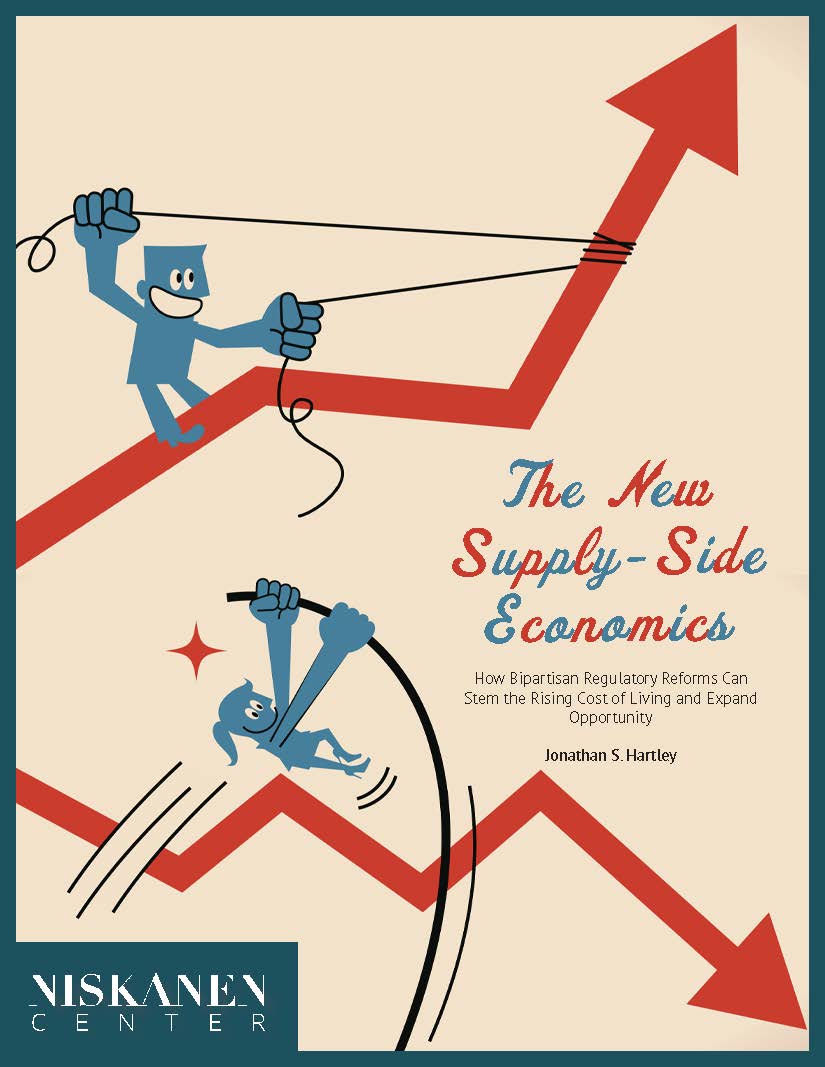Introduction
Suppose President Biden wants to salvage a meaningful first-term bipartisan policy agenda from the wreckage of the Democrats’ Build Back Better plan. In that case, there is ample opportunity to address the rising cost of living – a long-term trend now amplified by a sharp bout of inflation.
To get there, President Biden should be thinking seriously about “supply-side” reforms to the economy. The administration is beginning to embrace the concept of a supply-side agenda – in a recent speech, Treasury Secretary Janet Yellen cast “Build Back Better” as a form of “modern supply-side economics” that aims to spur productivity and lower inequality – but the approach should extend far beyond that bill.
All this may sound toxic to Democrats who associated “supply-side economics” with the intellectual movement that made a case for Ronald Reagan’s tax cuts. However, when economists talk about the supply side of the national economy, they have something much broader in mind. The fundamental idea is to achieve growth by spurring productivity in all forms, including making it easier and more compelling for workers and firms to engage in overall higher-value economic activity. Some extreme versions of this idea (such as “real business cycle theory” and “short-run monetary neutrality”) dismiss monetary policy and fiscal stimulus as hapless attempts to achieve growth by juicing demand. Various iterations of these sentiments can be hijacked by political economy into narrow “pro-business” agendas rather than true “pro-free enterprise” ones. Indeed, you can steer clear of these cliffs and still recognize the power of the argument that the supply-side of the economy is jammed. This can be done not just by a surfeit of container ships, but by pathological trends in education, housing, and health care that limit just how much American workers can produce. In effect, the core goods and services that make work possible have become too expensive.
As Samuel Hammond, Daniel Takash, and Steven Teles have argued in their paper “Cost-Disease Socialism”, these restrictions arguably have become a constraint to American economic growth and to the mobility of lower-income households. Brink Lindsey and Steve Teles’s book The Captured Economy and Matt Yglesias’s One Billion Americans both echo these arguments. These are problems similar to those the original supply-siders ascribed to very high marginal tax rates in the middle of the 20th century: meaningfully slowing economic growth and the economic mobility of the lower and middle class.
Even when it’s separated from tax policy, “supply-side” may sound like a dirty word to Democrats. But they should recognize that the first supply-sider was not Ronald Reagan, but John F. Kennedy, who cut taxes from shockingly high top marginal rates of above 90 percent (as an incentive measure more than for Keynesian stimulus). President Bill Clinton also leaned into the supply side of the economy with bipartisan economic initiatives on free trade and welfare reforms.
Progressives such as Ezra Klein are labeling this desperately needed new supply-side economic agenda “supply-side progressivism” while libertarians and free market conservatives term it “supply-side liberalism.” Whatever we call it, people from both parties can agree that the cost of living, especially in health care, housing, and education, is a growing problem that public policy needs to address. Here’s the start of a roadmap for a new supply-side policy agenda.
